Treatments for Heart Valve Disease
What You Need to Know
If you’ve been told you have heart valve disease, the treatment you need will depend on how severe your condition is and whether you have symptoms.
Mild Heart Valve Disease
If your condition is mild and you don’t have any symptoms, you might not need treatment right away. Instead, your doctor will likely recommend regular check-ups to keep an eye on your heart and make sure things aren’t getting worse.
TRANSCATHETER TREATMENT OPTIONS, not requiring open heart surgery
Heart valve disease doesn’t always mean open-heart surgery anymore. Today, many patients can be treated with transcatheter procedures, which are less invasive and often easier to recover from.
- For example, Transcatheter Aortic Valve Implantation (TAVI) allows doctors to place a new valve using a thin tube (catheter) through a small opening, usually in the leg. This means no need to open the chest, and most people go home within a few days
- For patients with mitral valve problems, a procedure called Transcatheter-edge-to edge repair with a clip, such as MitraClip can help. Doctors use a catheter to place a tiny clip on the mitral valve to help it close better and reduce leaking. This improves symptoms like shortness of breath and fatigue
- Similarly, for tricuspid valve disease, a newer treatment called TriClip is available. It works in the same way—by placing a small clip on the valve to help it close properly and reduce backward blood flow. This can help relieve swelling, tiredness, and breathing issues
These procedures are minimally invasive and do not require open heart surgery: and most people recover quickly. Your heart team will help to decide which option is best for you.
Drug treatments
If your heart valve disease becomes more serious or you start having symptoms like tiredness, breathlessness, or swelling in your legs, you may need medication to help your heart work better. These medicines can:
- Lower your blood pressure and protect your heart (e.g. ACE inhibitors)
- Reduce fluid build-up in your body and lungs (diuretics)
- Slow your heart rate (beta blockers)
- Prevent blood clots (anticoagulants)
Diuretics
Diuretics are drugs that help your body to get rid of excess fluid by stimulating the kidneys to produce more urine. As a result, the heart has to pump less fluid through the body and water retention (oedema), e.g. in the lungs or legs, should decrease.
Blood pressure-lowering agents
Blood pressure-lowering drugs (e.g. ACE inhibitors or AT1 blockers) are used to allow your heart to pump against a lower pressure and thus against less resistance. Your heart is relieved and less blood flows "backwards".
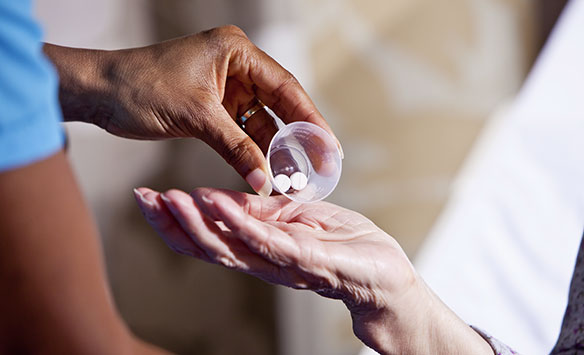
Blood thinning agents
Blood thinners (anticoagulants) are intended to reduce the risk of blood clots forming. They can therefore offer protection against strokes. These often occur as a result of cardiac arrhythmias, which can be caused by mitral valve regurgitation.
Open heart surgery
If your valve is badly damaged, you may need a procedure to fix or replace it. This can be done in two main ways:
- Valve repair – if the valve can be fixed without replacing it.
- Valve replacement – if the valve is too damaged, it may be replaced with:
- A mechanical valve (made from materials like carbon fibre, which can last a lifetime but requires blood-thinning medication)
- A biological valve (made from human or animal tissue, which usually lasts 10–15 years and doesn’t always need blood thinners)
- In some cases, a less invasive procedure called transcatheter valve therapy may be an option, especially for people who are not well enough for open-heart surgery.
Surgical treatment to reconstruct the heart valve is often used if it is possible to repair the defect and preserve the patient's own heart valve at the same time. The mitral valve is most frequently reconstructed. A common procedure here is annuloplasty, in which a "repair ring" is inserted to improve the valve's ability to close. In exceptional cases, some less complex reconstruction techniques can be performed minimally invasively via a small incision below the right nipple.
TAILOR
The Tailor™ Flexible Annuloplasty Ring and Band ARE FLEXIBLE AND ADAPTABLE TO SUSTAIN PHYSIOLOGIC MOVEMENT
The Tailor™ Flexible Annuloplasty Ring and Band are designed to maintain the size of a repaired mitral or tricuspid annulus while sustaining physiologic movement.
THE TAILOR RING PROVIDES A CUSTOMISABLE DESIGN
- Anterior and posterior support allows dynamic annular motion during the cardiac cycle
- Full, flexible ring can be tailored to address specific patient need
TAILOR BAND OFFERS A SIMPLE ALTERNATIVE FOR TRICUSPID VALVE REPAIR
- Standard pre-cut C-band provides time-saving simplicity
- Posterior support allows dynamic annular motion
- Band provides an alternative for tricuspid valve repair
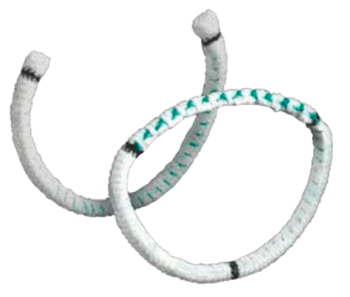
SÉGUIN
THE SÉGUIN™ SEMI-RIGID RING HAS A UNIQUE COMBINATION OF RIGIDITY AND FLEXIBILITY
The Séguin™ Semi-Rigid Ring provides surgeons with a combination of rigidity and flexibility for mitral valve repair.
- Semi-rigid, tri-dimensional posterior designed to preserve the physiologic motion of the annulus
- More rigid anterior allows for annular remodeling
- Solid one-piece core resists needle penetration and reduces potential for suturing through the core
FLEXIBILITY IN JUST ONE STEP
The design advantage of the Séguin™ Semi-Rigid Ring delivery system is that it employs a one-step process designed to save time and reduce complexity during surgery.
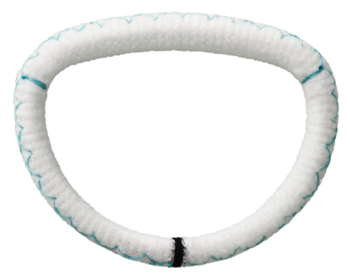
RIGID SADDLE
THE RIGID SADDLE RING HAS A NATURAL SADDLE-SHAPED DESIGN FOR DURABLE, COMPLETE REMODELING
- Annular-height-to-commissural-width ratio of 15% mimics a healthy mitral annulus1
- Titanium alloy core maintains anatomical shape and provides annular remodeling
- Saddle shape contributes to efficient distribution of leaflet stress and chordal tension1–3
- Redistribution of leaflet stress and chordal tension through saddle-shape remodeling
may increase repair durability1,3,4
EASE OF IMPLANTATION
- Polyester double-velour cuff is supported by a unique triangular core for a larger
suture target - Clear, well-marked holder is designed to increase visibility during implant
- Secure ergonomic handle quickly attaches and detaches to save time during implant
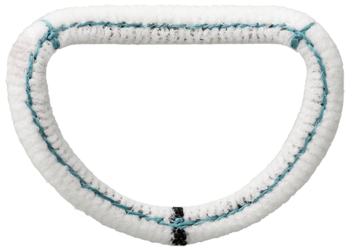
If a heart valve cannot be repaired, the surgeon must remove the diseased valve and replace it with a prosthesis. Either a mechanical heart valve made of metal or plastic or a biological heart valve replacement can be used. A heart valve replacement is performed with the chest open and using a heart-lung machine, as the heart must not beat for the duration of the operation. After the insertion of a mechanical heart valve, anticoagulant (blood-thinning) medication must be taken for the rest of your life to prevent blood clots on or around your new heart valve.
MECHANICAL HEART VALVE PROSTHESIS
Mechanical heart valves can take over the function of your body's own heart valves. They are generally made of so-called pyrolytic carbon. Like your own heart valve, the mechanical valve also has a ring that holds the valve leaflets in place. The mechanical valve opens and closes with every heartbeat so that the blood flows through the heart as desired.
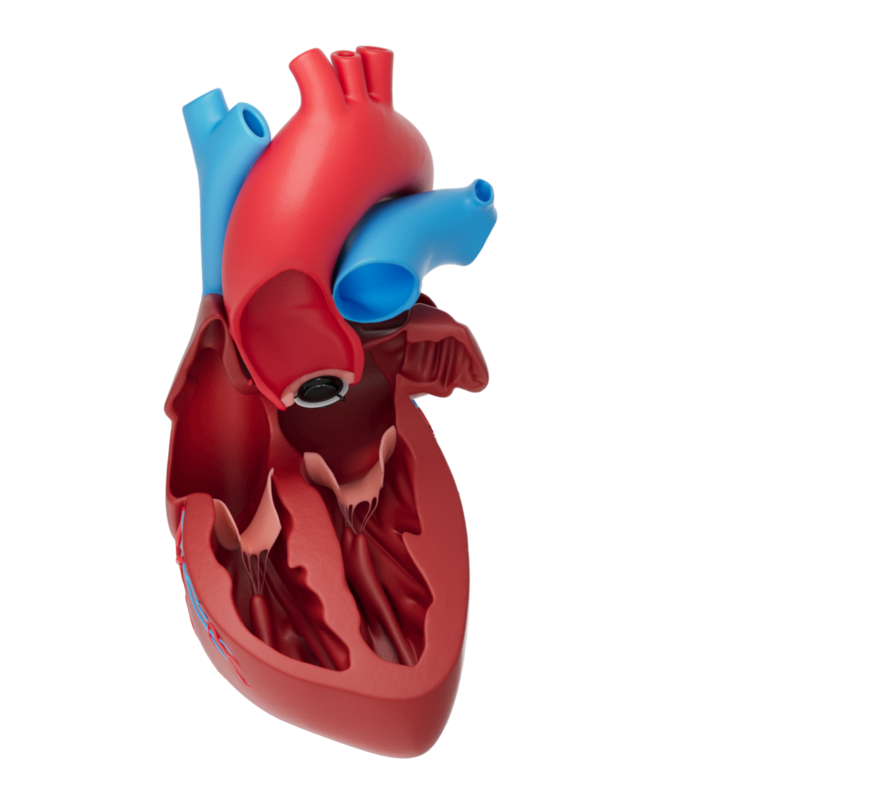
TISSUE HEART VALVE
Biological heart valve prostheses are made of animal tissue that has been carefully prepared for use in the human heart. Biological valve prostheses are divided into porcine valves, which consist of a porcine aortic valve, and pericardial valves, which consist of bovine or porcine pericardial tissue. The animal tissue is usually mounted on a scaffold (stent) for stabilisation. Your doctor will select the valve that best suits your needs and anatomical conditions.

The Epic Max valve is indicated for patients requiring replacement of a diseased, damaged, or malfunctioning native aortic valve. It may also be used as a replacement for a previously implanted aortic prosthetic heart valve.
Epic Max is an optimal solution for surgical aortic valve replacement and patient lifetime management. The larger redesigned internal orifice helps to alleviate the burden on the heart and reduce the load on the left ventricle. Having an index valve with a larger internal orifice area, low stent posts, and non-curtaining leaflets also has a positive effect on future valve-in-valve procedures. With the rise of transcatheter aortic valve replacement (TAVR) or transcatheter aortic valve implantation (TAVI) procedures, the Epic Max valve is a promising option for patients today, tomorrow, and the road ahead.
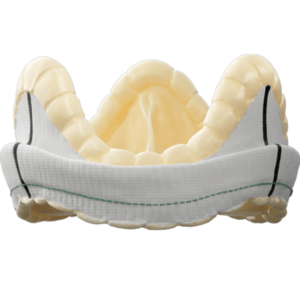
The Platform for Possibility
The Epic Platform has been proven over time and defined by strong hemodynamics, intuitive implantability, a future-forward design, and more. The platform boasts the low ventricular protrusion in all valve sizes, a flexible polymer stent, individually selected porcine leaflets to ensure optimal coaptation, and a flexible sewing cuff designed to minimize both in-implant suture drag and post-implant paravalvular leak.
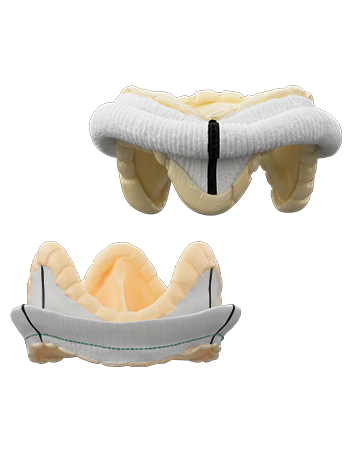
Find a heart centre
near you with
the clinic search
Search for a clinic
or cardiologist
near you.
- Salgo IS, Gorman JH 3rd, Gorman RC, et al. Effect of annular shape on leaflet curvature in reducing mitral leaflet stress. Circulation. 2002;106(6):711-717. doi.org/10.1161/01.CIR.0000025426.39426.83.
- Jimenez JH, Soerensen DD, He Z, et al. Effects of a saddle shaped annulus on mitral valve function and chordal force distribution: an in vitro study. Ann Biomed Eng. 2003;31(10):1171-1181. doi.org/10.1114/1.1616929.
- Jimenez JH, Liou SW, Padala M, et al. A saddle-shaped annulus reduces systolic strain on the central region of the mitral valve anterior leaflet. J Thorac Cardiovasc Surg. 2007;134(6):1562-1568. doi.org/10.1016/j.jtcvs.2007.08.037.
- Gorman JH 3rd, Jackson BM, Enomoto Y, et al. The effect of regional ischemia on mitral valve annular saddle shape. Ann Thorac Surg. 2004;77(2):544-548. doi.org/10.1016/S0003-4975(03)01354-7.
9-UK-5-16525-01 09-2025 REV A
